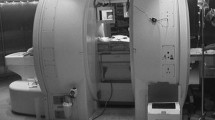Abstract
Background
Hemorrhage during the liver transection is the major hazard for laparoscopic hepatectomy (LH). We aimed to evaluate the feasibility and safety of a 915-MHz microwave device used in LH.
Methods
Data were retrospectively analyzed regarding 60 patients who underwent LH with or without 915-MHz microwave coagulation at our center from January 2016 to June 2016. 30 patients underwent the 915-MHz microwave-assisted LH (MW group), and 30 patients otherwise were considered as control group.
Results
No perioperative mortality was observed. Intraoperative blood loss amounts in microwave group and control group were 26.83 ml and 186.33 ml, respectively (P < 0.001). The durations of parenchyma transaction (55.17 vs. 70.83 min, P < 0.001), blood occlusion (2.17 vs. 25.33 min, P < 0.001), and operation (120.67 vs. 148.00 min, P < 0.001) were much shorter in microwave group compared with control group. Lower incidence of postoperative complications (0.0 vs. 14.3%, P = 0.038) and shorter length of postoperative hospital stay (6.00 vs. 7.23 days, P = 0.027) were also noted in the microwave group, compared with the control group.
Conclusion
915-MHz microwave-assisted LH was found to be safe and efficient.

Similar content being viewed by others
References
Song T (2015) Recent advances in surgical treatment of hepatocellular carcinoma. Drug Discov Ther 9:319–330
Ishizawa T, Gumbs AA, Kokudo N, Gayet B (2012) Laparoscopic segmentectomy of the liver: from segment I to VIII. Ann Surg 256:959–964
Weber JC, Navarra G, Jiao LR, Nicholls JP, Jensen SL, Habib NA (2002) New technique for liver resection using heat coagulative necrosis. Ann Surg 236:560–563
Pai M, Navarra G, Ayav A, Sommerville C, Khorsandi SK, Damrah O, Jiao LR, Habib NA (2008) Laparoscopic Habib 4X: a bipolar radiofrequency device for bloodless laparoscopic liver resection. HPB 10:261–264
Tan K, Du X, Yin J, Dong R, Zang L, Yang T, Chen Y (2014) Microwave tissue coagulation technique in anatomical liver resection. Biomed Rep 2:177–182
Zacharoulis D, Sioka E, Tzovaras G, Jiao LR, Habib N (2013) Laparoscopic left lateral sectionectomy with the use of Habib 4X: technical aspects. J Laparoendosc Adv Surg Tech A 23:549–552
Zhou W, Liang M, Pan H, Liu X, Jiang Y, Wang Y, Ling L, Ding Q, Wang S (2013) Comparison of ablation zones among different tissues using 2450-MHz cooled-shaft microwave antenna: results in ex vivo porcine models. PLoS ONE 8:e71873
Dewall RJ, Varghese T, Brace CL (2012) Visualizing ex vivo radiofrequency and microwave ablation zones using electrode vibration elastography. Med Phys 39:6692–6700
Andreano A, Brace CL (2013) A comparison of direct heating during radiofrequency and microwave ablation in ex vivo liver. Cardiovasc Interv Radiol 36:505–511
Pillai K, Akhter J, Chua TC, Shehata M, Alzahrani N, Al-Alem I, Morris DL (2015) Heat sink effect on tumor ablation characteristics as observed in monopolar radiofrequency, bipolar radiofrequency, and microwave, using ex vivo calf liver model. Medicine 94:e580
Simo KA, Tsirline VB, Sindram D, McMillan MT, Thompson KJ, Swan RZ, McKillop IH, Martinie JB, Iannitti DA (2013) Microwave ablation using 915-MHz and 2.45-GHz systems: what are the differences? HPB 15:991–996
Chen L, Luo HP, Dong SL, Chen XP (2016) Safety assessment of hepatectomy for huge hepatocellular carcinoma by three dimensional reconstruction technique. Zhonghua Wai Ke Za Zhi 54:669–674
Kokudo T, Hasegawa K, Matsuyama Y, Takayama T, Izumi N, Kadoya M, Kudo M, Ku Y, Sakamoto M, Nakashima O, Kaneko S, Kokudo N (2016) Survival benefit of liver resection for hepatocellular carcinoma associated with portal vein invasion. J Hepatol 65:938–943
Ocuin LM, Tsung A (2016) Minimally invasive hepatic surgery. Surg Clin North Am 96:299–313
Perini MV, Starkey G, Fink MA, Bhandari R, Muralidharan V, Jones R, Christophi C (2015) From minimal to maximal surgery in the treatment of hepatocarcinoma: a review. World J Hepatol 7:93–100
Tranchart H, O’Rourke N, Van Dam R, Gaillard M, Lainas P, Sugioka A, Wakabayashi G, Dagher I (2015) Bleeding control during laparoscopic liver resection: a review of literature. J Hepatobiliary Pancreat Sci 22:371–378
Chen J, Dong X, Tang Z, Gao SL, Wu YL, Fang HQ (2013) Clinical study of liver resection with bipolar radiofrequency device: Habib 4X. Zhonghua Yi Xue Za Zhi 93:2553–2556
Kanazawa A, Tsukamoto T, Shimizu S, Kodai S, Yamazoe S, Yamamoto S, Kubo S (2013) Impact of laparoscopic liver resection for hepatocellular carcinoma with F4-liver cirrhosis. Surg Endosc 27:2592–2597
El-Assal ON, Yamanoi A, Soda Y, Yamaguchi M, Igarashi M, Yamamoto A, Nabika T, Nagasue N (1998) Clinical significance of microvessel density and vascular endothelial growth factor expression in hepatocellular carcinoma and surrounding liver: possible involvement of vascular endothelial growth factor in the angiogenesis of cirrhotic liver. Hepatology 27:1554–1562
Acknowledgements
This study was supported by the National Natural Science Foundation of China (Grant Nos. 81372626 and 81572975), the National S&T Major Project (No. 2012ZX10002017), the Key research and development project of science and technology department of Zhejiang, China (No. 2015C03053), the Innovative Research Groups of National Natural Science Foundation of China (No. 81421062), and the Major Program of National Natural Science Foundation of China (No. 91542205).
Author information
Authors and Affiliations
Corresponding authors
Ethics declarations
Disclosures
Xiaogang Dong, Zhongquan Sun, Tianchun Wu, Wenjia Guo, Sheng Yan, and Shusen Zheng declare that they have no conflicts of interest or financial ties to disclose.
Rights and permissions
About this article
Cite this article
Dong, X., Sun, Z., Wu, T. et al. 915-MHz microwave-assisted laparoscopic hepatectomy: a new technique for liver resection. Surg Endosc 33, 395–400 (2019). https://doi.org/10.1007/s00464-017-5945-7
Received:
Accepted:
Published:
Issue Date:
DOI: https://doi.org/10.1007/s00464-017-5945-7



